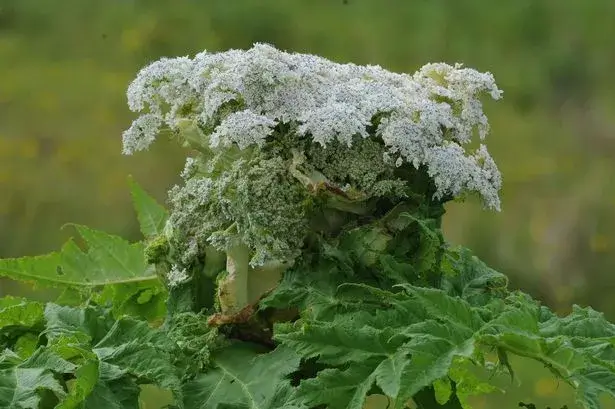Fresh Warning Issued for Giant Hogweed with Toxic Sap That Causes Severe Burns
A recent alert has highlighted the dangers associated with giant hogweed, a plant known for its toxic sap that can result in severe burns and blistering.
Even a brief encounter with any part of the plant, followed by exposure to sunlight, can cause significant harm.
Reports of injuries caused by giant hogweed have already surfaced this year, with individuals suffering painful blisters.
The plant is prevalent in the UK. Particularly in the Peak District National Park, and its cultivation is illegal due to the harm it can cause.
Giant hogweed, an invasive plant species, is notorious for the injuries it can inflict. It is identifiable by its towering height of up to five meters, serrated leaves, and white flowers. Each seed head can hold an astonishing 50,000 seeds.
What is Giant Hogweed?
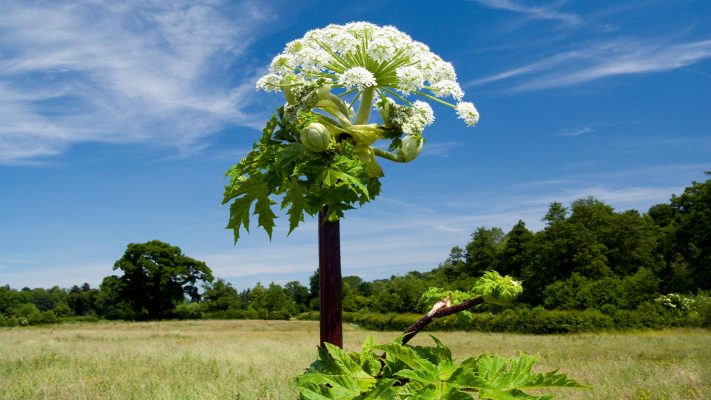
Giant hogweed, technically known as Heracleum mantegazzianum, is an invasive plant species with a poisonous sap that poses a considerable public health danger.
It originated in the Caucasus area and has since spread to other regions of the world, including the United Kingdom.
The plant’s towering height of up to five metres, serrated leaves, and clusters of white blooms make it easy to identify.
Symptoms of Giant Hogweed Exposure
Exposure to the poisonous sap of the gigantic hogweed can cause phytophotodermatitis, a disease in which the skin becomes hypersensitive to UV radiation. Rashes and itching are the initial signs, which can swiftly progress to severe blisters if the skin is expose to sunlight.
In extreme circumstances, medical treatment is required. The effects might last for a long time, with the rash and itching reoccurring after further exposure to UV rays.
Facilitating its rapid spread through intentional planting, wind dispersal, and water courses. Given its potential harm, planting giant hogweed is considere an offense in the UK.

Daniel Docking, the technical manager of the Property Care Association’s Invasive Weed Control Group, emphasizes the importance of public awareness regarding giant hogweed.
Numerous cases are reported each year, often involving unwitting individuals. Especially children, who come into contact with the plant during outdoor activities.
Symptoms of exposure include rashes, itching, and blisters on the skin. In severe cases, medical attention becomes necessary.
Furthermore, also the effects can persist for an extended period. With the rash and itching recurring upon subsequent exposure to UV light.
You may also like: Flemish Giant Rabbits
Giant Hogweed : Heightened Concerns in 2023
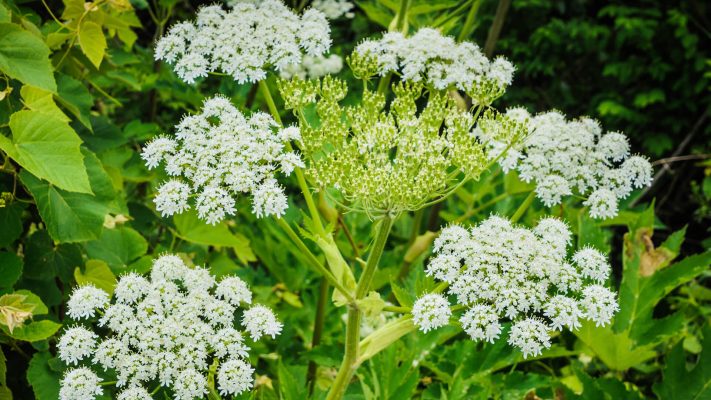
Experts express heightened concerns this year due to the favorable conditions for giant hogweed growth. The combination of a wet spring and warmer mid-May temperatures provides optimal circumstances for the plant to flourish.
As a result, authorities urge the public to exercise caution and vigilance when outdoors. Especially in areas where giant hogweed is prevalent.
Giant hogweed’s toxic sap poses a significant risk, capable of causing severe burns and also blistering upon contact followed by exposure to sunlight.
Authorities stress the importance of being informed about this invasive weed and taking appropriate precautions, particularly for children engaged in outdoor activities.
With the plant thriving in the UK’s favorable climate, it is crucial to remain vigilant and report any sightings to local authorities to ensure the safety and well-being of communities.
Why is Giant Hogweed a Concern in 2023?
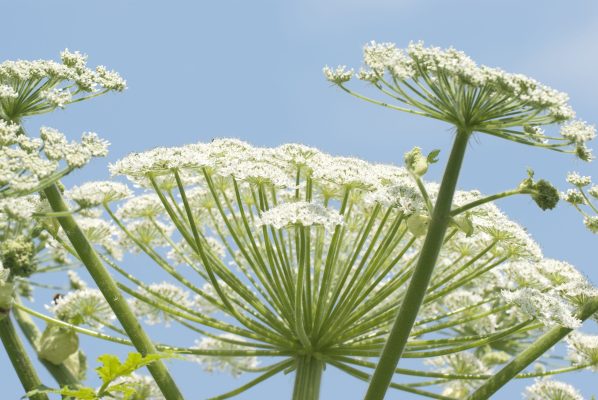
Experts have raised increased alarm over the emergence of gigantic hogweed in 2023. The combination of a rainy spring and warmer mid-May temperatures creates ideal conditions for the plant to thrive.
The plant’s ubiquity, notably in the Peak District National Park in the United Kingdom, along with reports of injuries, has resulted in increasing public awareness efforts. Giant hogweed cultivation is prohibited in the United Kingdom owing to the potential for injury.
| Symptom | Description |
| Rashes | Initial reaction to the toxic sap, usually appears within 48 hours of exposure |
| Itching | Accompanies the rash, can be intense |
| Blisters | Develops into painful blisters if exposed to sunlight after contact with the sap |
| Long-term Effects | Recurring rash and itching upon subsequent exposure to UV light, potential for skin discoloration and sensitivity to sunlight |
Precautions to Take When Outdoors
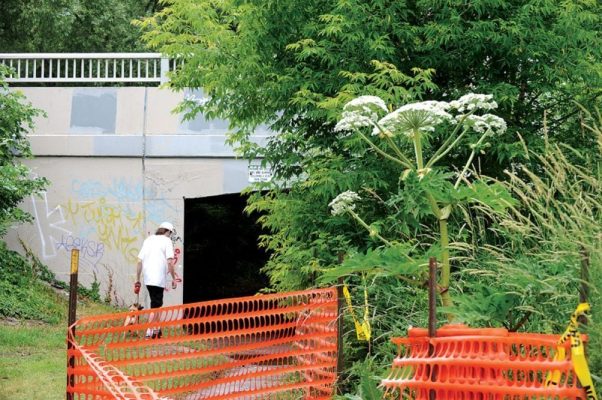
Given the dangers of gigantic hogweed, it is critical to be cautious and vigilant when outside, especially in places where the plant is common. Avoid handling the plant and make sure your children are informed of the risks.
If you come into touch with the plant, properly wash the affected area with soap and water and prevent direct sunlight exposure. Seek medical treatment if symptoms arise.
Any sightings of the plant should be notified to local authorities so that it may be safely removed and spread is prevented.




